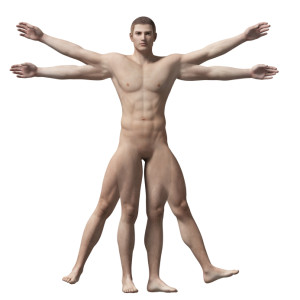Laban did not neglect the body. He had to create body part symbols and categorize bodily actions to develop his notation system. Movement themes in Laban’s Modern Educational Dance address awareness of the body and explorations of various actions of the limbs, while over half of Mastery of Movement is devoted to enumerating bodily actions of all kinds. Laban’s focus in both these works, however, is primarily expressive.

Elaboration of the BODY category in Laban Movement Analysis is rightfully credited to Irmgard Bartenieff. Bartenieff, through the Fundamentals she developed in her physical therapy practice, provided a functional basis to support full expressivity in effort and space. Moreover, the rising popularity of somatics makes Bartenieff’s work and its integration into movement analysis training, particularly relevant today.
Meaning in Motion: Introducing Laban Movement Analysis approaches the BODY from both analytic and somatic perspectives. First, a terse discussion outlines how bodily actions are analyzed and recorded using notational devices created by Laban. A second section places the work of Laban and Bartenieff in the broader historical context of the somatics movement. A third section describes Bartenieff Fundamentals as a somatic practice, drawing on my own studies with Bartenieff in the 1970s. The following is an excerpt of this section:
“Bartenieff considered movement — a process of effort and shape variation — to be central to her somatic techniques. When I studied with Bartenieff, classes started on the floor with “six basic exercises” but always progressed to standing and moving across the floor. Little time was given over to introspection. When imagery was used, it was always accompanied by movement. The only time the body was passive was when we were asked to concentrate on the breath. Even in these cases, the breath was always moving in some direction so as to create an inner shaping, or we were being asked to make sounds.
Bartenieff observed that “the basic activities of the body are lying, sitting, crawling, kneeling, standing, and walking.” Consequently, principles addressed in the Basic Six floor exercises were practiced, not only lying, but also sitting, crawling, kneeling, standing, and locomoting. Some principles were practiced by moving between these activities, in sequences that involved level-change, effortful phrasing, clear spatial intent, and bodily awareness of the relationship between part and whole. While exercises addressed bodily function, the aim was to facilitate skillful expression.”
